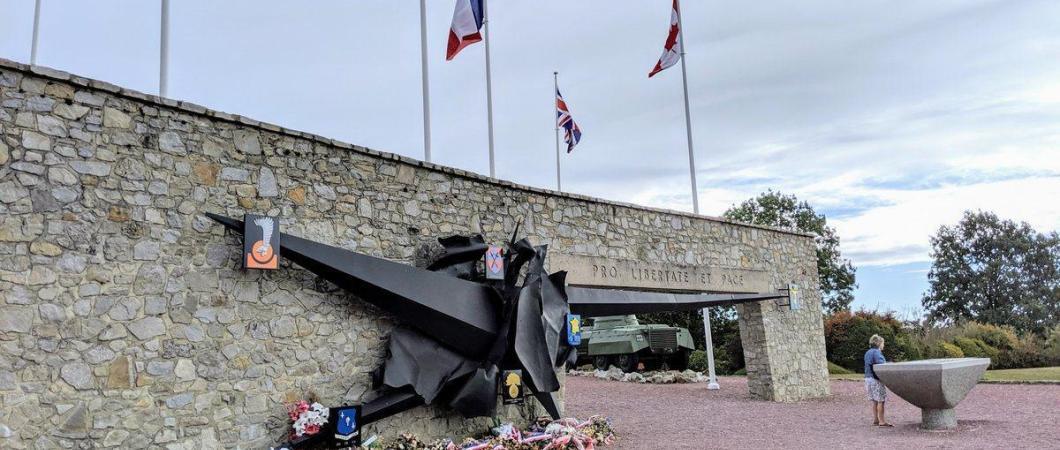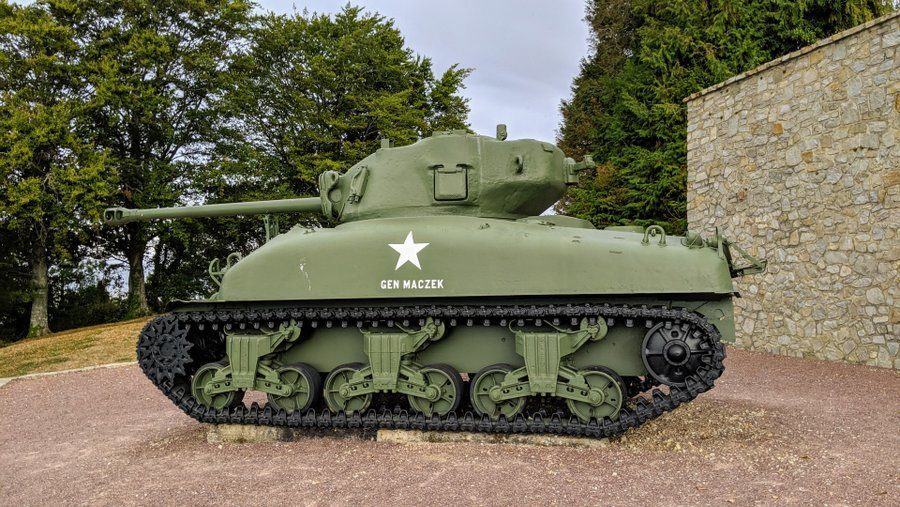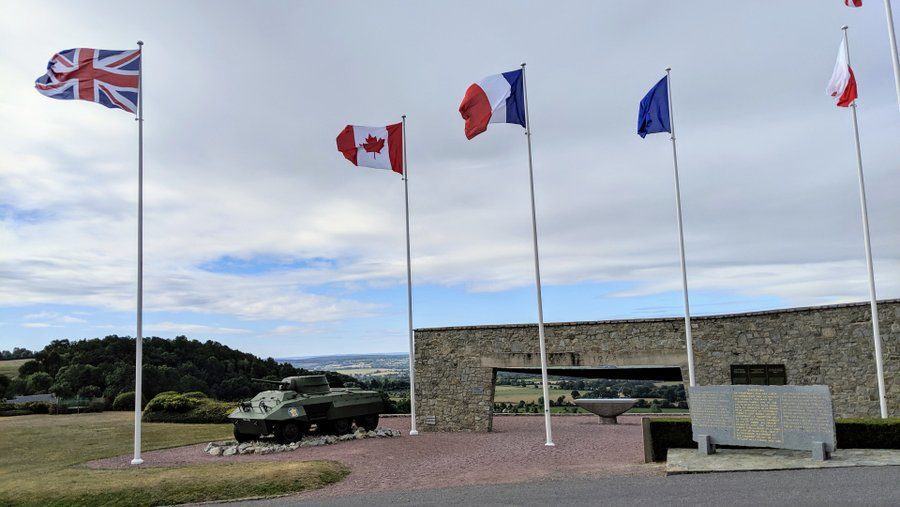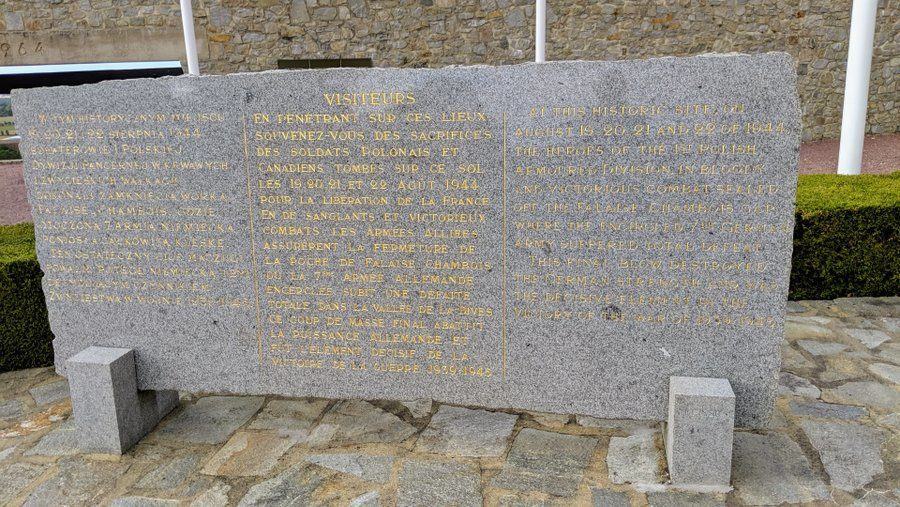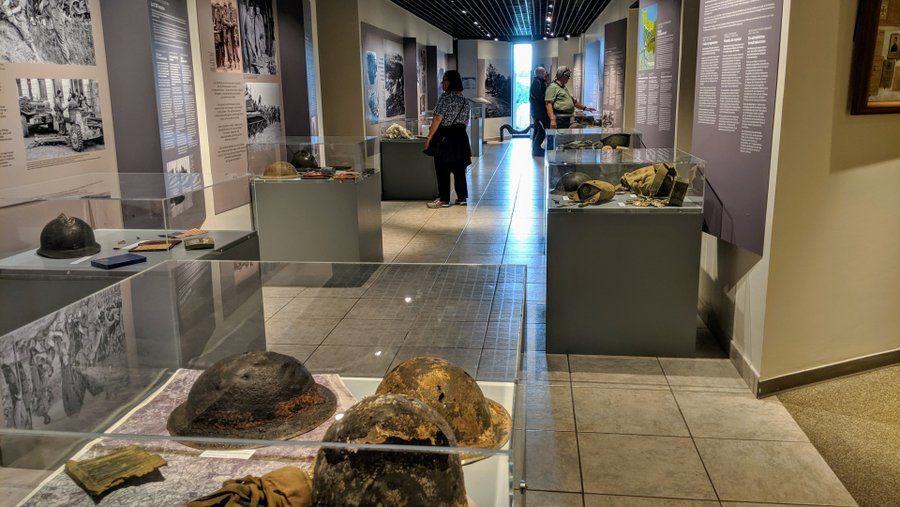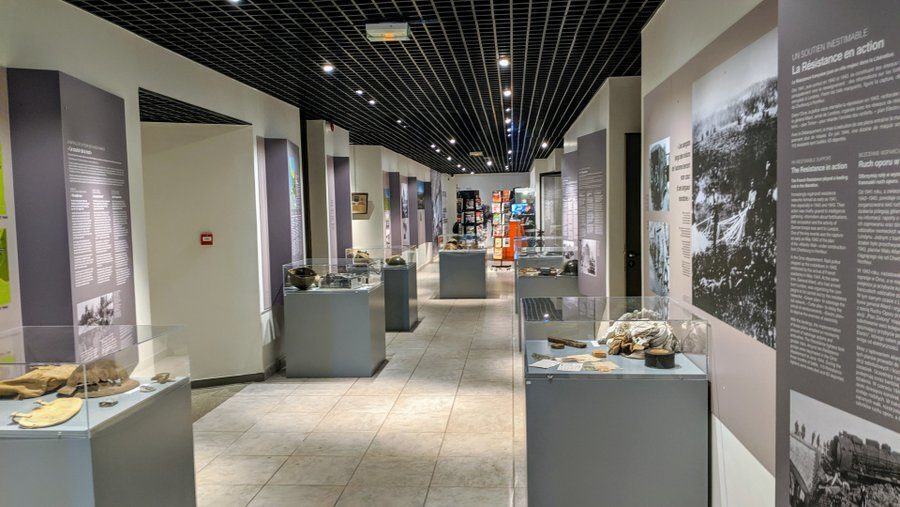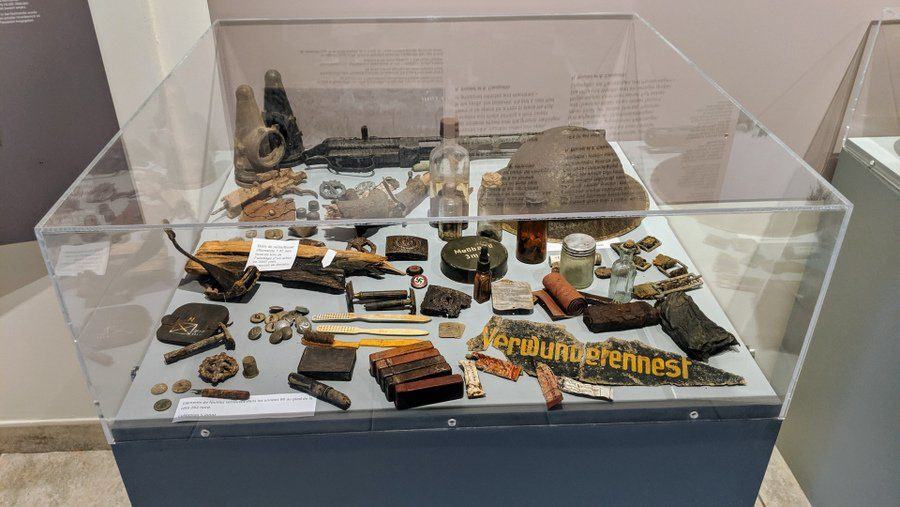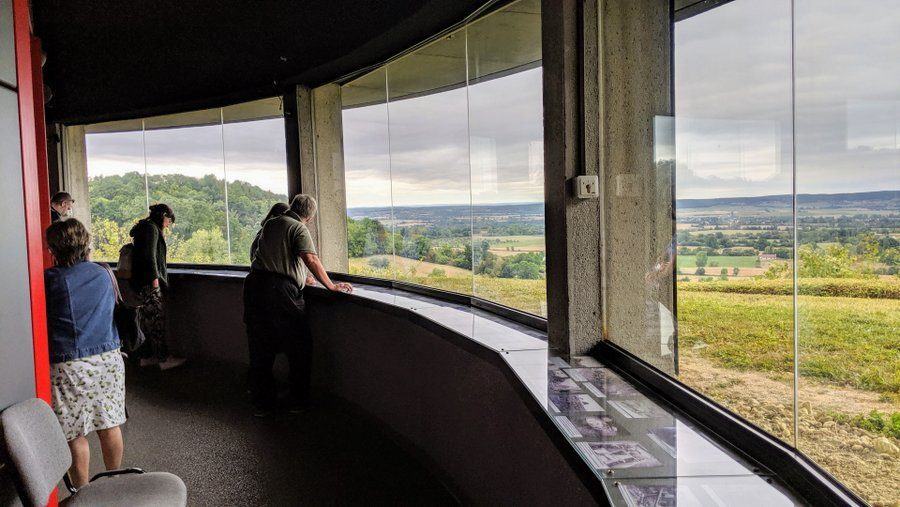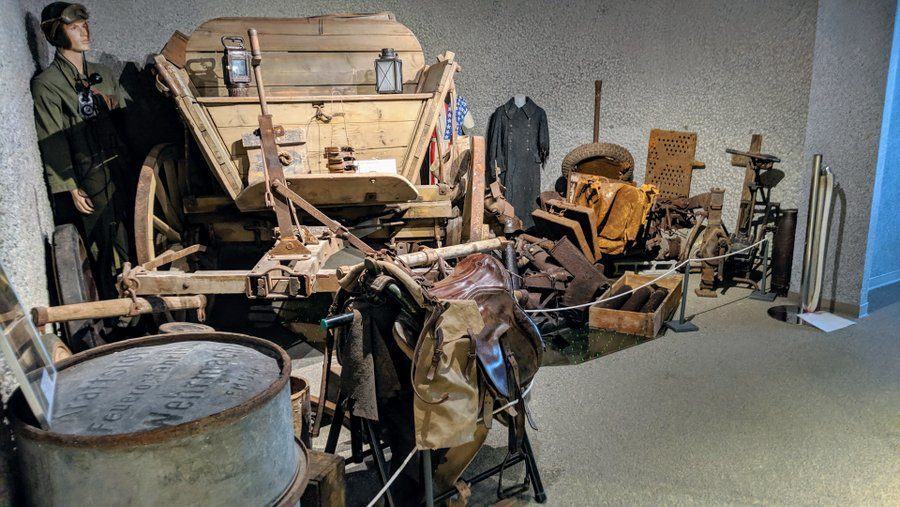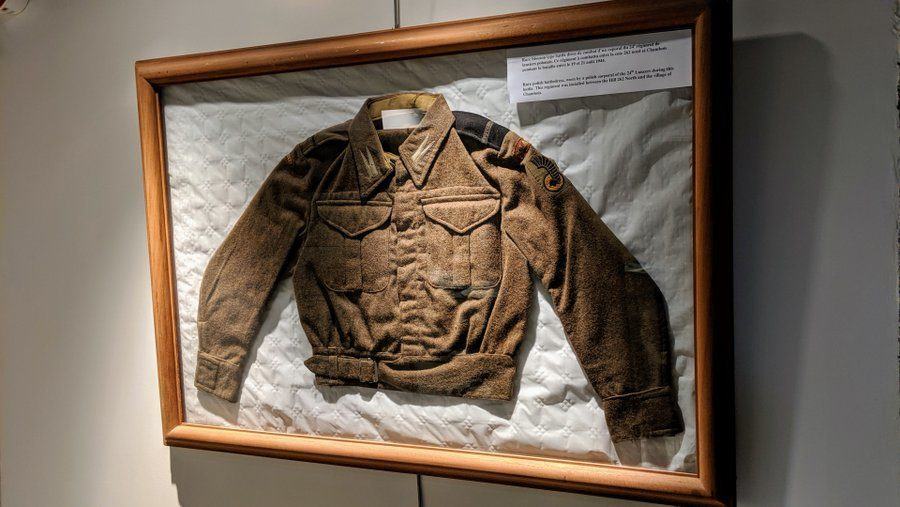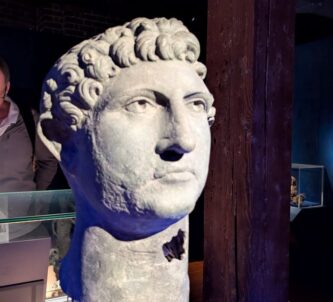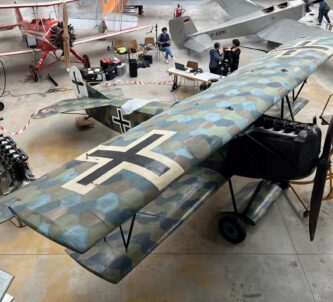Montormel*, or ‘Hill 262’ as it was known to the Allies, was the location where the ‘Falaise pocket’ was finally sealed by Polish and Canadian forces on 21 August 1944, trapping up to 50,000 German soldiers and marking the end of the Battle of Normandy.
On this hill, which is part of a high ridge overlooking the ‘pocket’, there is the Memorial itself, and a few metres away, a small museum. (I don’t review memorials, not least because it would be inappropriate, so it’s the museum that the review applies to.)
The Falaise Pocket
After the D-Day landings, the Americans in the West and the British & Canadians from the beaches in the East, began to spread out from their beachheads, and consolidate. The city of Caen was Gen. Montgomery’s first objective. It was expected to be taken on D+1 but, robustly defended by proved a tough nut to crack and wasn’t captured till 20 July – a month and a half later!
Meanwhile the Americans had reached Saint Lo, and with elements German armour being withdrawn from their sector to help defend the final assault on Caen, they were able to exploit the situation by launching Operation Cobra on 25 July – the breakout. They quickly began to spread out, west into Brittany, south past Rennes, and south east towards Le Mans, while at the same time the British & Canadians were keeping up pressure on the German lines to the east.
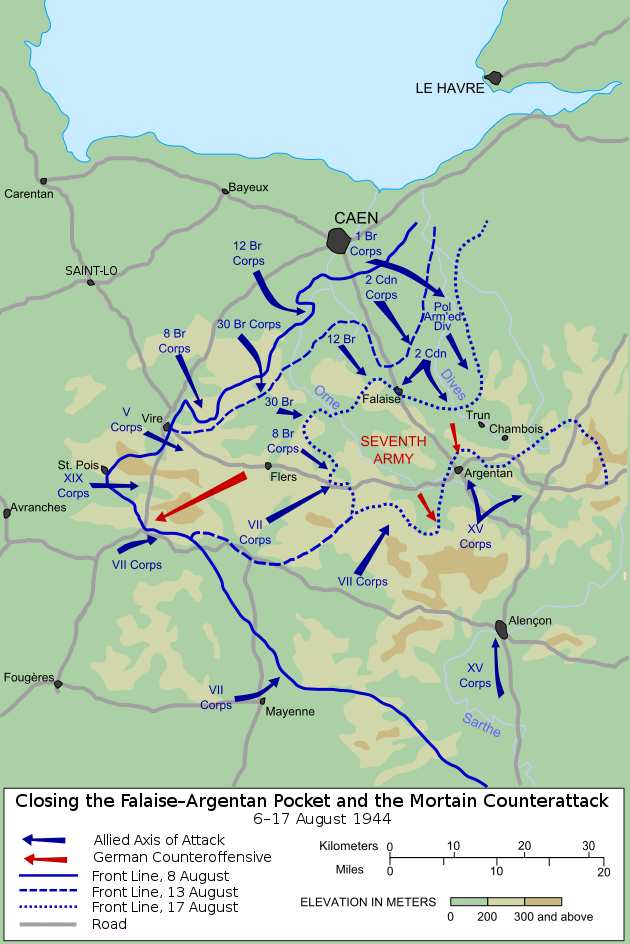
Naturally, the brilliant (not!) military strategist, Adolph Hitler, ordered Field Marshal Gunther von Kluge to counter-attack back toward Saint-Lo. Despite his protestations, Von Kluge was forced to gather what limited resources he had left in the 7th Army and attack west (Operation Luttich, 7 Aug). For a few days he made some progress but as Allied resources were brought to bear, especially air power, the offensive came to a halt.
Meanwhile the US Army had picked up pace. They reached Le Mans on 12 Aug and began to swing swing north towards Alençon, encircling the extended German bulge. Everyone saw what was happening at the same moment! Von Kluge was replaced on 15 Aug by Field Marshal Walter Model who was then given permission to retreat. As the German Army started trying to extricate itself northeast in the direction of Paris, it was being pushed from behind by the US Army 29th & 7th Corps, while the US 15th raced north towards Argentan and the 2nd Canadian Corps, with General Stanisław Maczek’s 1st Polish Armoured division, raced south to meet them and shut the door.
Amidst bitter fighting the US Army reached Chambois, and the Poles with Canadian support captured Hill 240 outside Ecorches and Hill 262 (Montormel) on 17 August. The trap had shut.
Over the next three days the Germans threw everything they had at the Poles in an effort to “remove the cork”. They attacked the hill from the front and, using units that were already outside the ‘pocket’, from behind. The beleaguered poles managed, just, to hang on with artillery support from the Canadians, until they were relieved on the 21st Aug.
The trap had shut and was now bolted with half the German Army Group B still in a 10-mile diameter pocket between Falaise to the north and Argentan to the south, where they were being bombed and shelled remorselessly from all sides and the sky above. It was a bloody end to the German occupation of Normandy.
Memorial de Montormel
The memorial was built on the summit of Hill 262 and inaugurated in 1965. It has panoramic views across the Falaise – Argentan battleground although I really struggled at first, even with a handy map on a plinth at the memorial, to understand what I was looking at. I was on my way from the south of France to the ferry at Ouistreham (Caen – Portsmouth). When I pulled into the car park at the back of the memorial my body-compass told me I was looking north towards the coast. So that would put me on the south side of the gap with the Germans streaming from left to right across the plains in front of me.
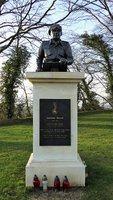
In fact, of course, when you stand at Montormel and look out, you are looking southeast and the whole – well, half – of the German army is coming straight at you!
The Memorial itself is a stone wall with an archway and a terrace. There are stone plaques with inscriptions, a map on a plinth, an M8 light armoured car in the colours of the De Gaulle’s Free French, and a Polish M4 Sherman tank, with what looks like a 17-pounder to me – so a ‘Firefly’.
The tank has Gen. Mazcek’s name painted on it, and in the woods to the north there is a bust of Gen. Mazcek on a plinth.
Montormel Museum
The museum at Montormel is not big, and it’s not obvious.
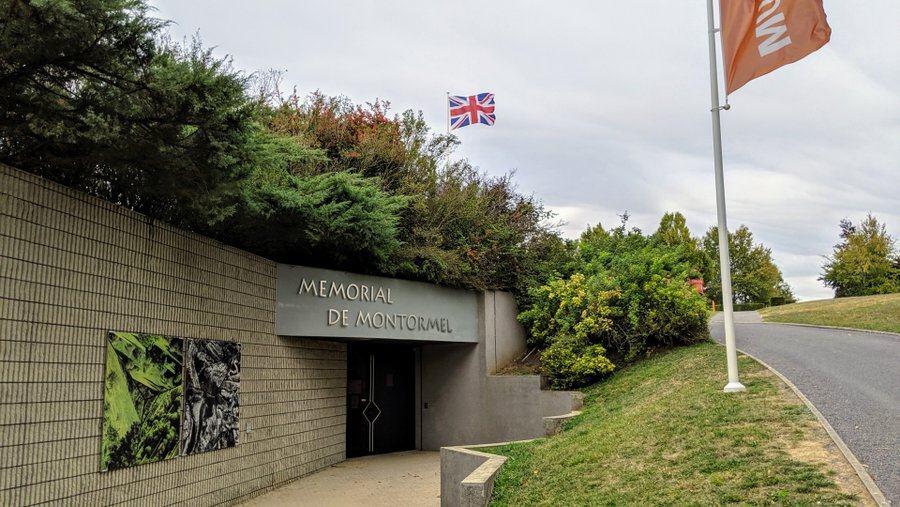
It is only a few metres away from the memorial, but it was designed to merge into the hilltop with minimal visual impact, so it is built like a bunker into the hill with a grass roof.
Inside, there is a main gallery running the length of the building with displays of artefacts and images from the battle. On both sides of it there are two small cinemas. There is a circuit to follow, starting with the circular cinema room on the right which projects a documentary every 15 mins with an animated map and historical film footage about the military movements and strategies that culminated with the violent 3-day battle in the Falaise Pocket. When it ends the opposite half of the circular wall opens like a vertical blind to let the audience out to the panoramic bay window which has signage and photos illustrating where the events took place on the landscape in front.
When you leave the panoramic window you are led through some small exhibits back to the central gallery, and to the second cinema on the other side which runs a documentary about the Battle of Normandy, featuring the accounts of locals and veterans who experienced it.
Overview
The memorial and the museum are inseparable, in that you would be unlikely to visit one and not the other, although, obviously, there’s no entrance fee for the memorial.
Montormel sometimes gets overlooked by visitors to the region because it is some distance inland from the densely packed D-Day sites on the coast. That said, the museum has just had a record season in 2019 (up from 13,000 to nearly 19,000 visitors), due in large part to it being the 75th Anniversary of the invasion.
As usual I wish I had spent a little more time there. Given its size, I was expecting to spend around 30-40 minutes in the museum, but I hadn’t anticipated the two movies. So I had to rush past the various static displays before setting off to catch my ferry!
* Montormel is the main ridge of an escarpment, behind it on east slope is the hamlet of Mont-Ormel. There is a road which runs up the scarp face and through pass between Point 262N and Point262S. The memorial is located on 262N.
** There is some confusion among historians about the exact shape & identity of the Montormel-Coudehard battleground. The Poles seem to have been split into three groups. One was at the northern end on Hill 240, a mile east of Ecorches. The other two groups were on the ridge running between the villages of Coudehard & Mont-Ormel, at 262N. One of the groups was supposed to take Point 262S but never got there and so ended up fighting on 262N . Gen. Maczek had referred to the shape on the map as “Maczuga” (the mace), which is how most poles refer to it. There is mention of another group on a hill outside Chambois, but I can’t confirm it, although at some stage the Poles certainly did link up with the Americans at Chambois – there are photos!
D-Day Normandy Posts
Declaration: No need. I made a private visit and paid for my entry to the museum.
Factbox
Website:
Memorial Montormel
Getting there:
Mémorial de Montormel, Les Hayettes
61160 MONTORMEL
France
Best to drive independently, or visit with a tour group. It’s in the middle of nowhere!
From Caen it’s just over an hour. Head SSE to Falaise on the N158, then take the D63/D13 roads to Trun and the D242 up to the memorial.
If you’re coming from the Paris direction, take the autoroute A28 to Orbec, then the D46/D16/D33 route to Pontchardon, then D248/D246/D16 route to the memorial. It’s about 3 hours drive.
Events:
The museum has a small programme of events & conferences during the year. See their website for details.
Entry Price (2020):
| Adult | €6.00 |
| Child (12+), Students, Groups (20+) | €5.00 |
| Veterans | €4.00 |
| Child (under 12) | €3.50 |
| Child (under 6) | €2.50 |
| WW2 Veterans | Free |
Opening Hours:
| 1 – 30 April | Every day, 10:00 – 17:00 |
| 1 May – 30 Aug | Every day, 09:30 – 18:00 |
| 1 Sep – 30 Oct | Every day, 10:00 – 17:00 |
| 1 Nov – 31 Mar (Winter) | Wednesdays, Saturdays & Sundays, 10:00 – 17:00 |

